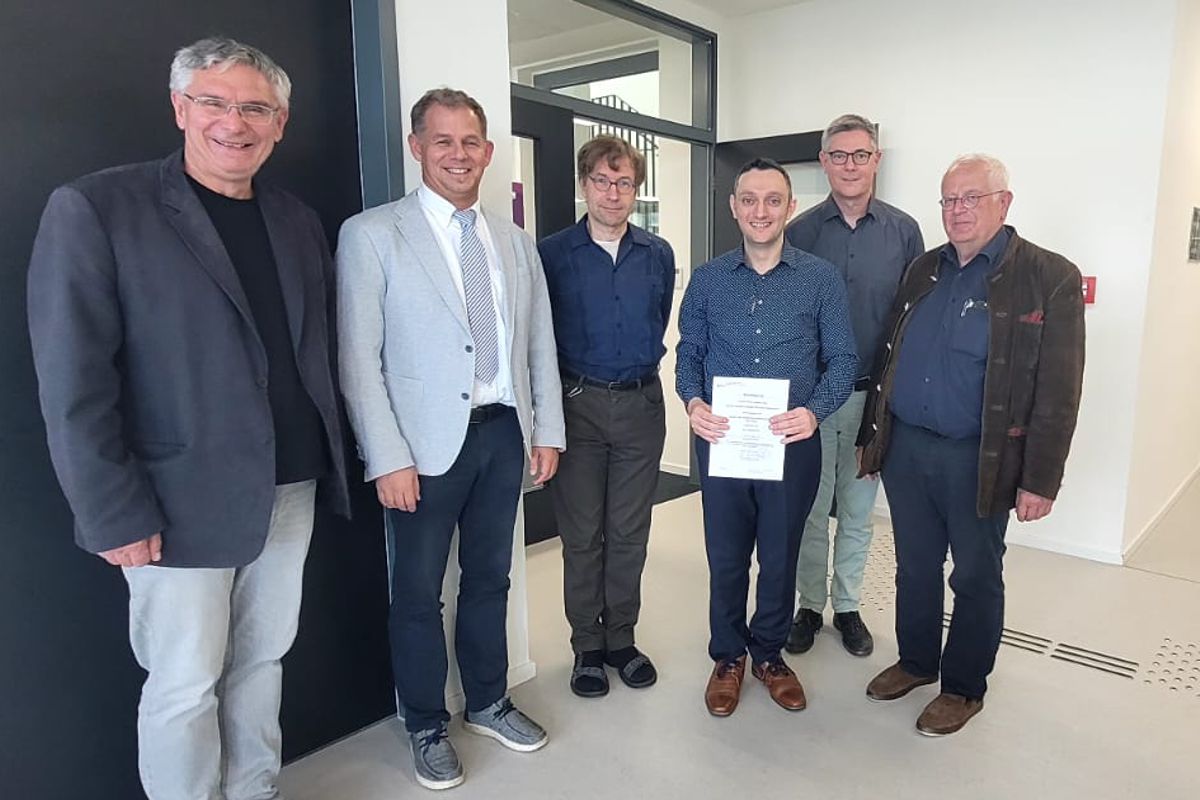No. 19 - Nawar Habboush
Nawar Habboush: Solving the Inverse Problem for Localizing the Biomagnetic Activity in the Heart
Pdf-based submission (available freely via the MACAU system), 2024
Commission
- Prof. Dr.-Ing. Gerhard Schmidt
(first reviewer)
- Prof. Dr. med. Ulrich Stephani
(second reviewer)
- Prof. Dr.-Ing. Robert Rieger
(examiner)
- Prof. Dr.-Ing. Hermann Kohlstedt
(head of the examination board)
Abstract
This thesis aims to develop a comprehensive solution for both forward and inverse problems
in modelling the human heart, with a specific focus on accurately analysing MCG and
ECG datasets. The research methodology involves a meticulous process of data recording,
MRI processing, and constructing a multi-regional model that segments different tissues
based on their relevant characteristics, ultimately providing a solution for the forward
problem. The proposed approach employs the use of Kalman filter and state-space models,
followed by the GARCH model to solve the inverse problem, resulting in improved
accuracy of data analysis and source localization.
This thesis marks the first attempt to apply the Kalman filtering methodology to analyse
MCG data, drawing from extensive experience gained in brain research, particularly
for EEG and MEG datasets. The proposed approach has been tested and validated using
both simulated and real MCG and ECG datasets from individuals, demonstrating its
efficacy in analysing heart activity data and its immense potential for clinical applications.
The significance of this research lies in its potential implications for the diagnosis and
treatment of various heart conditions. The developed methodology can precisely localize
sources of heart activity, aiding in diagnosis and intervention planning, such as ablation
or pacemaker implantation. The non-invasive method of activity localization using MCG
and ECG datasets, as compared to the invasive method of using a catheter, opens up new
avenues for the diagnosis and treatment of heart conditions.
While simpler inverse problem methods that do not require high computational power
can be used to find the source activity of both MCG SQUID and ECG electrodes datasets,
this thesis also aims to provide data analysis for sensors with a lower signal to noise ratio
like the Magnetoelectric Sensors being developed in Kiel. The usage of such sensors is
cheaper in terms of initial device costs and running costs.
This interdisciplinary research presents a novel methodology for analysing MCG and
ECG datasets that has the potential to revolutionize the field of medical science, specifically
the diagnosis of heart conditions. The immense potential of this research highlights
the significant contributions that interdisciplinary research with engineering can make
towards advancing medical science.






 On behalf of the members of the Chair of Digital Signal Processing and System Theory, we would like to take this opportunity to wish you all a very Merry Christmas and a peaceful, restful winter break. We hope that this festive season brings you joy, relaxation, and cherished moments with your loved ones.
On behalf of the members of the Chair of Digital Signal Processing and System Theory, we would like to take this opportunity to wish you all a very Merry Christmas and a peaceful, restful winter break. We hope that this festive season brings you joy, relaxation, and cherished moments with your loved ones.